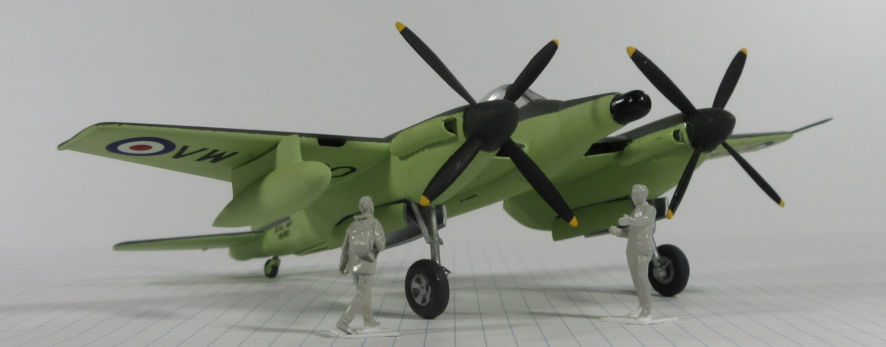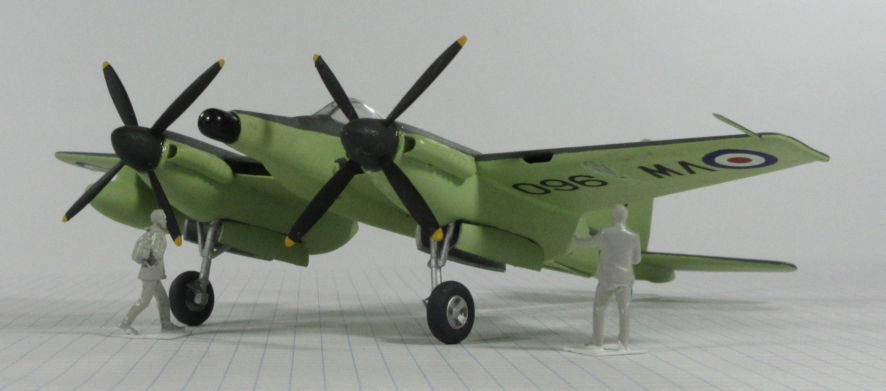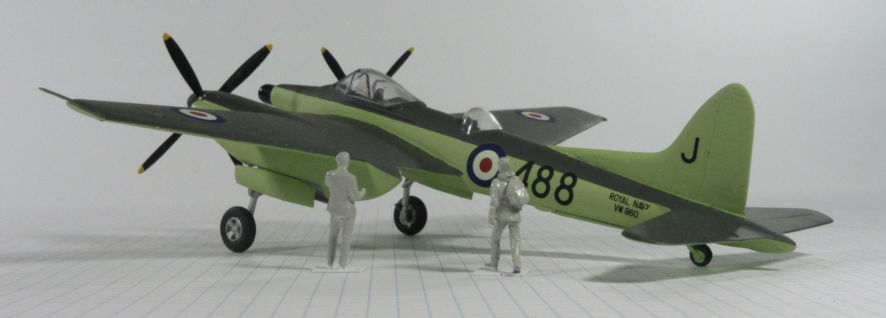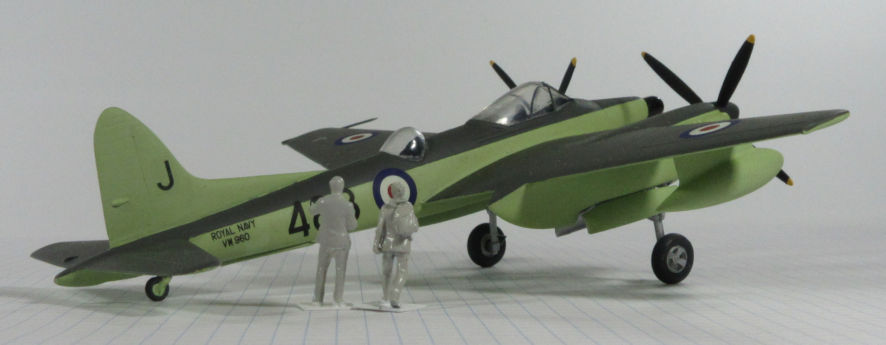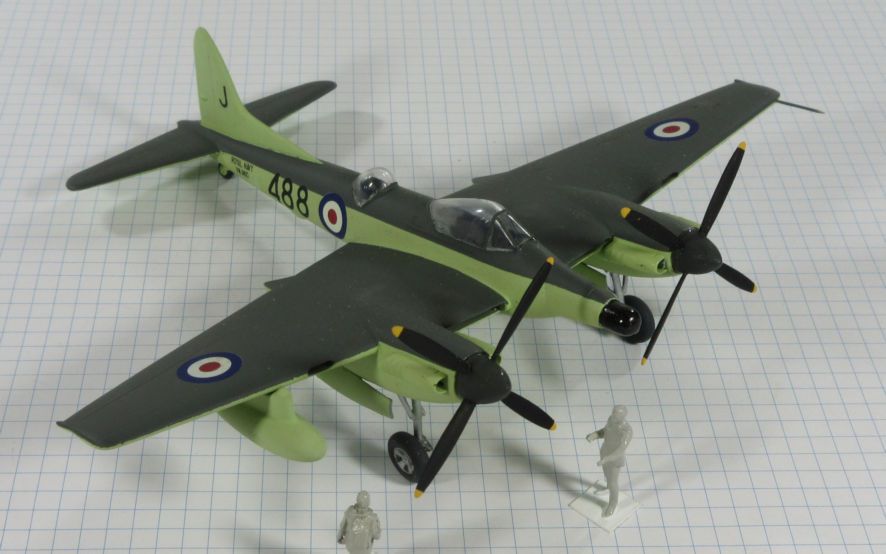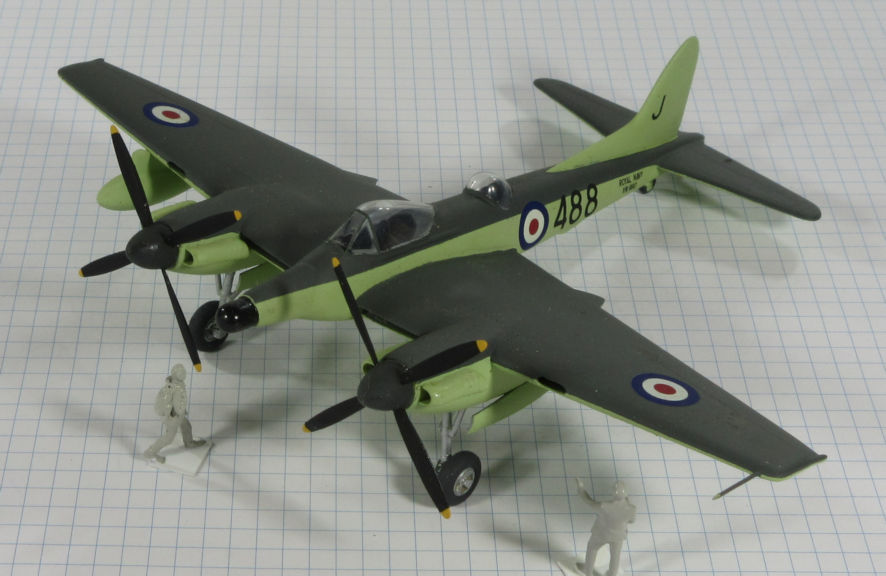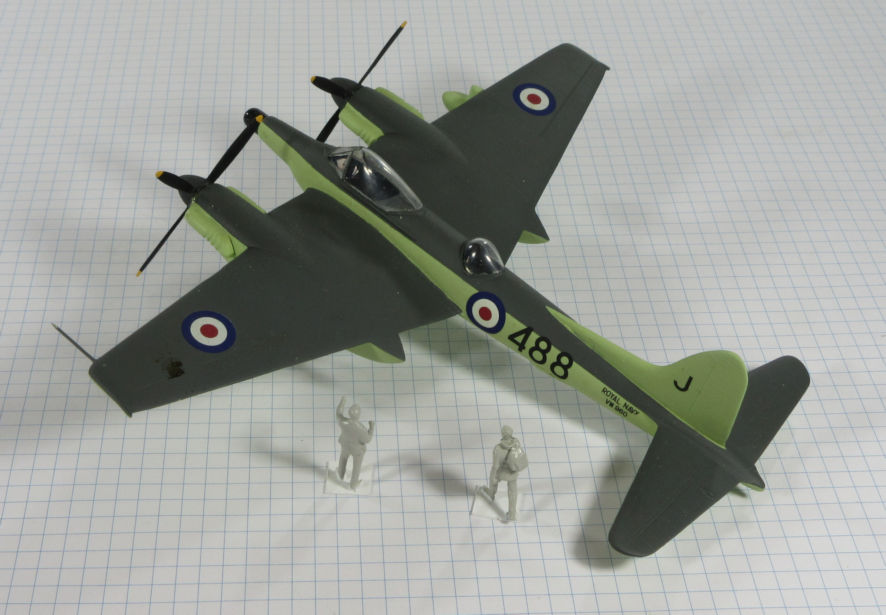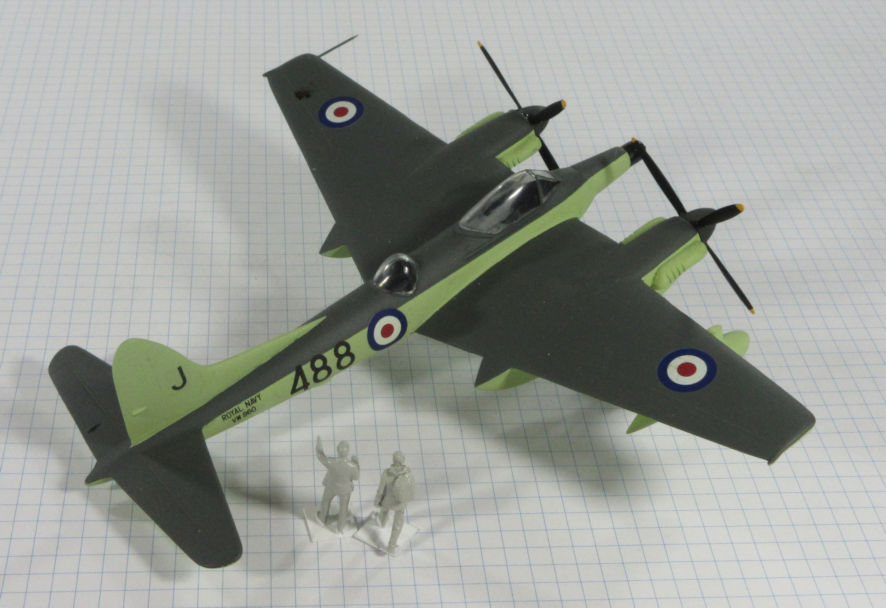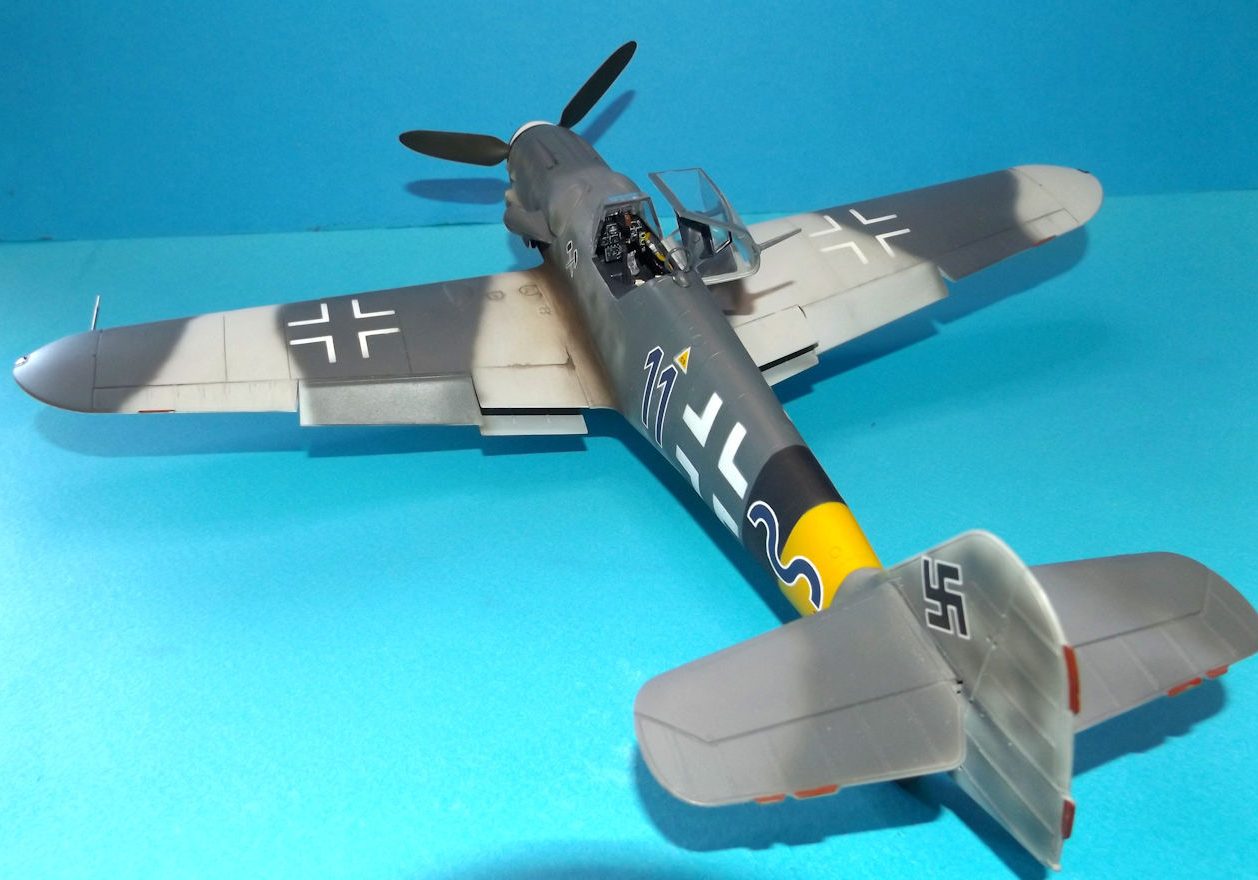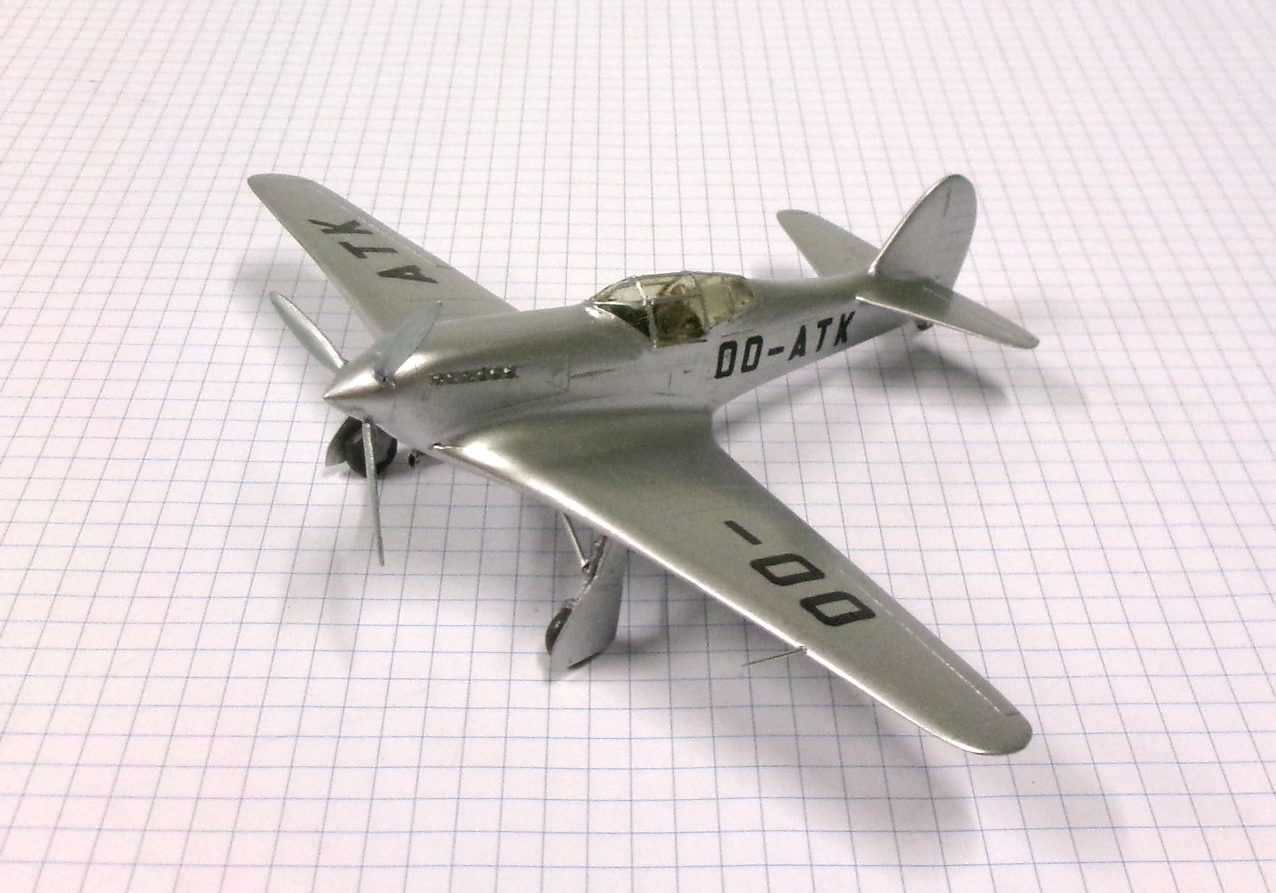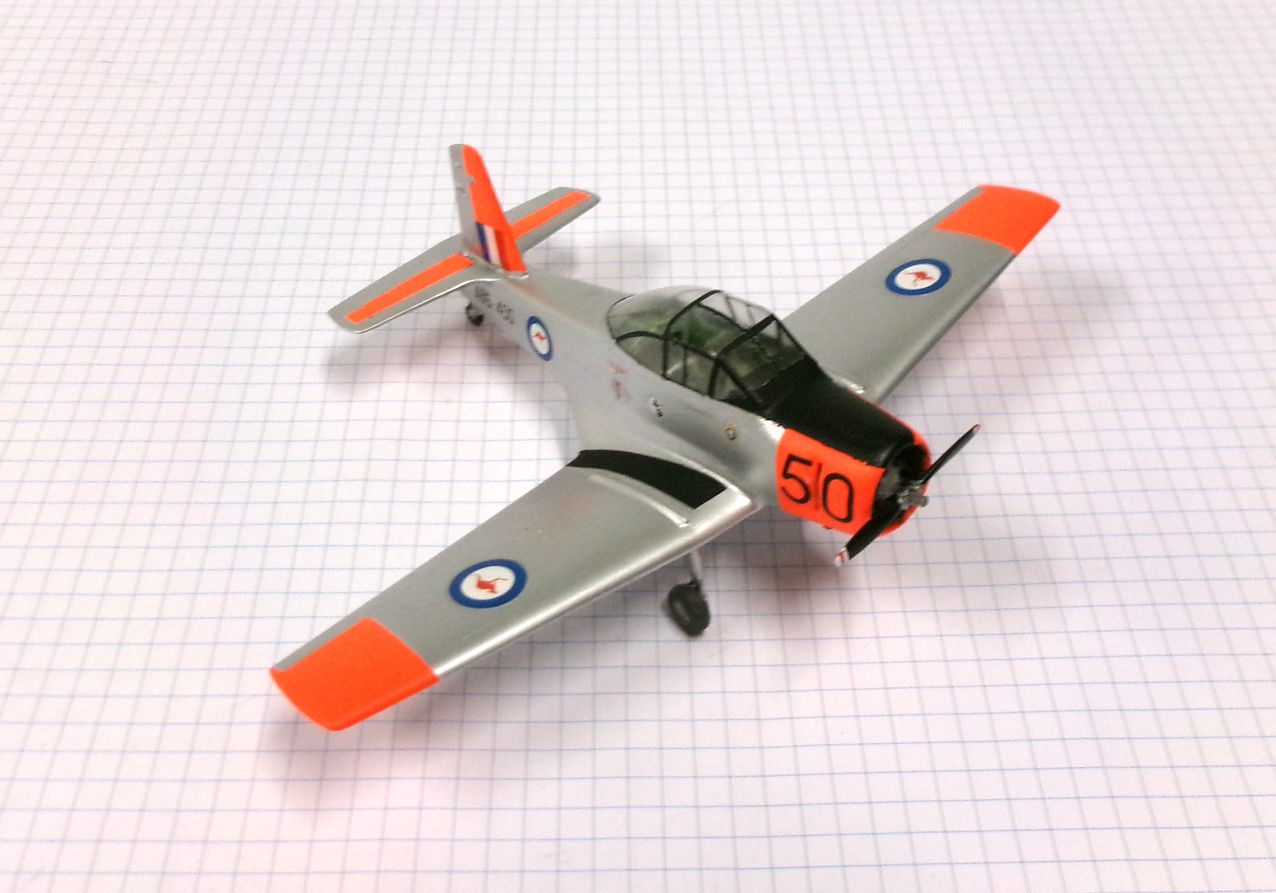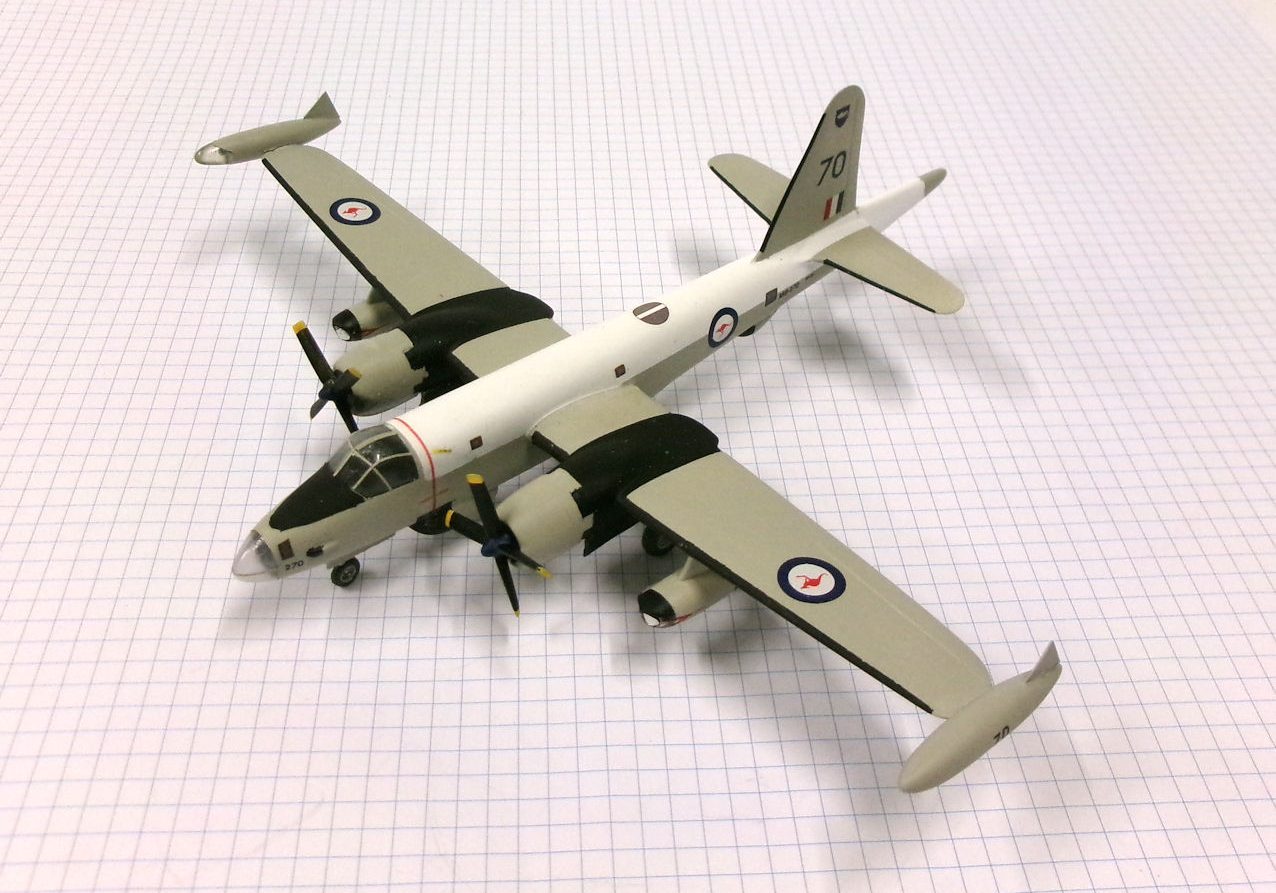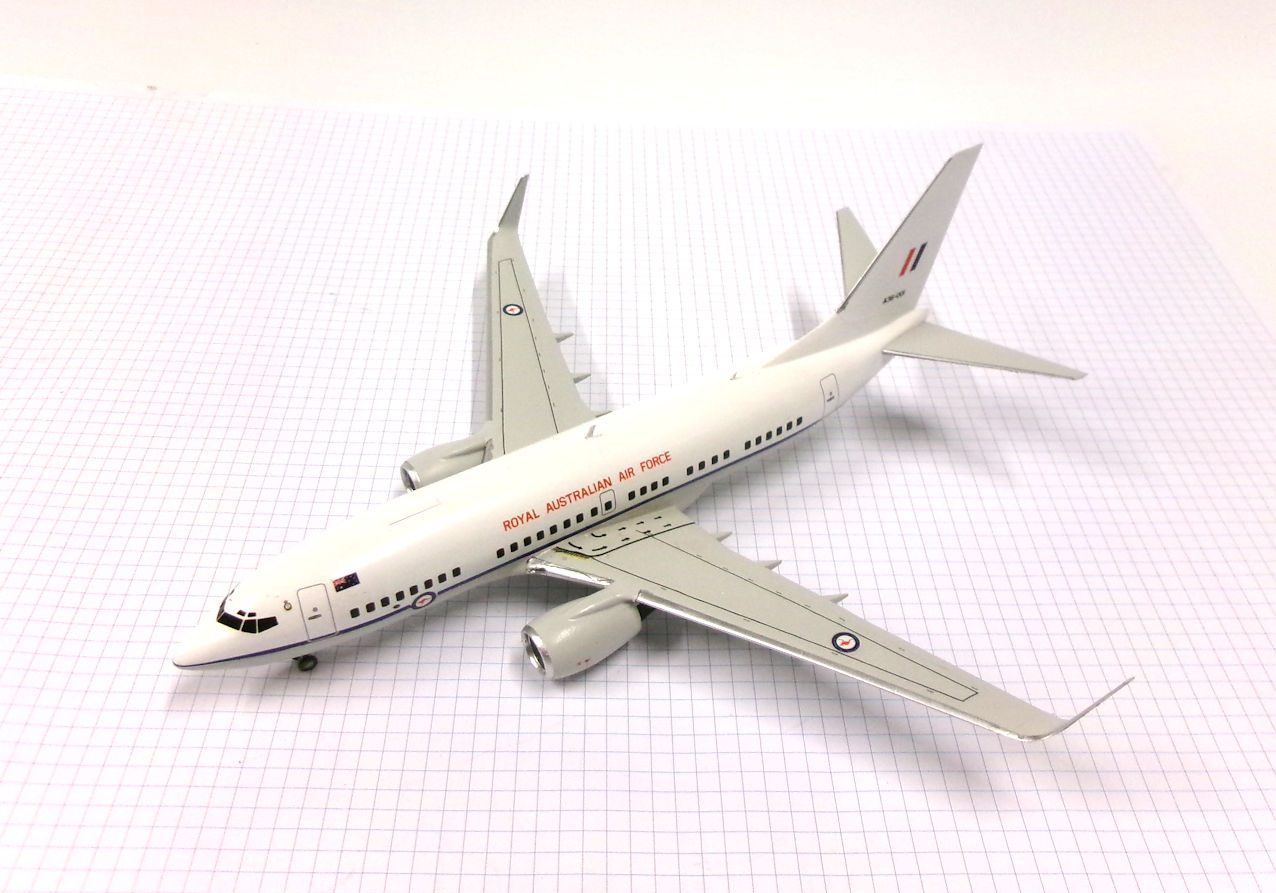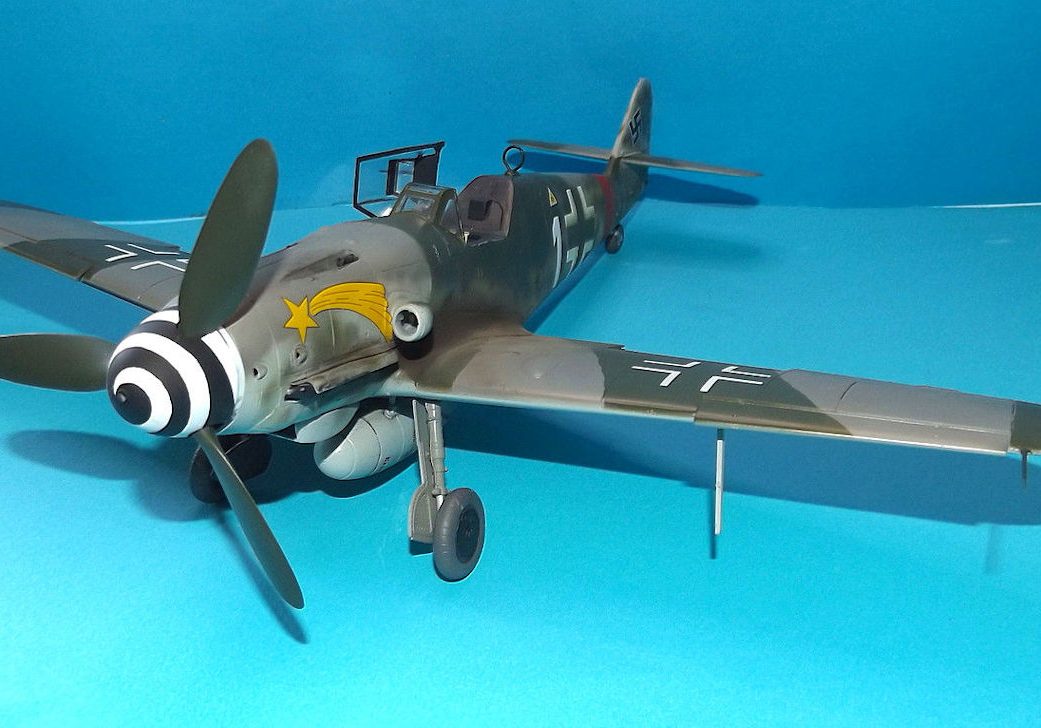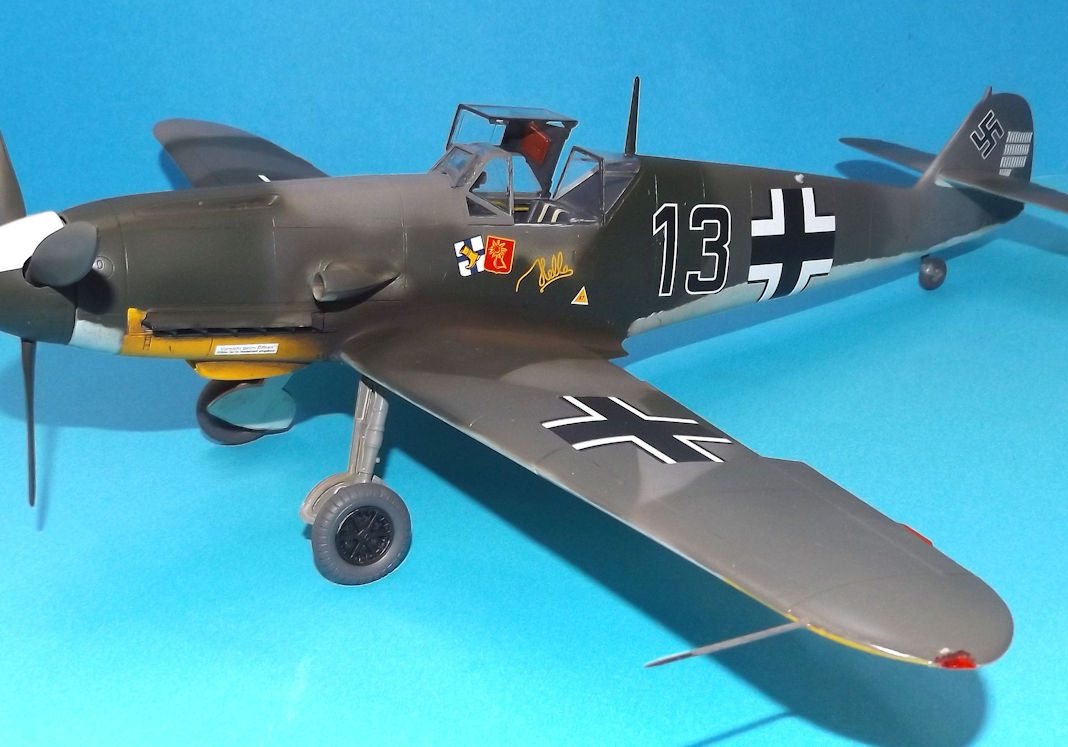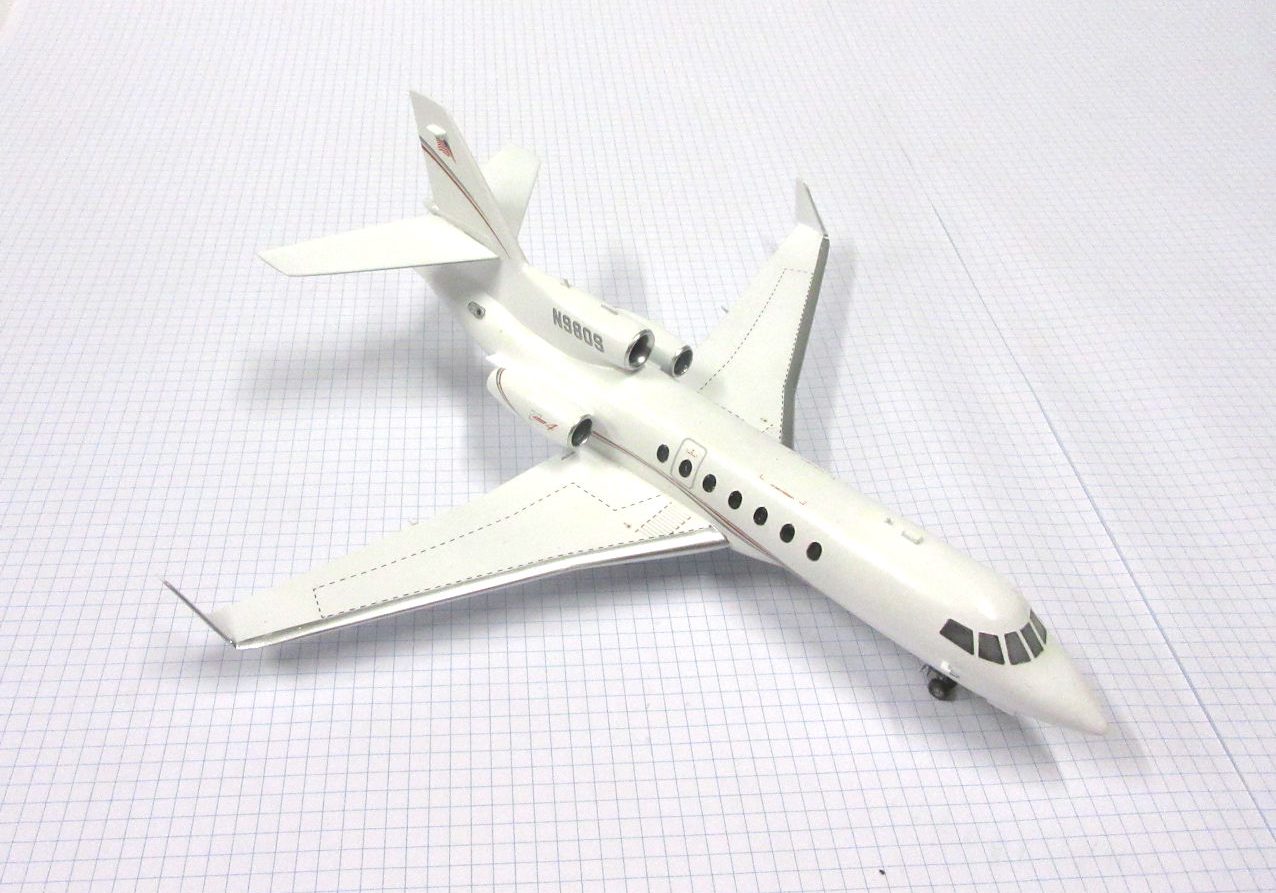History
The Hornet was one of the final generation of piston engine fighters developed during World War II. It was fast, nimble and long ranged and designed for operations in the Pacific, but the war ended before it saw action.
DeHavilland began design of the Hornet in 1942, it was ordered into production in June 1943 and the prototype first flew on 28 July 1944.
It used design experience gained from the Mosquito and Rolls Royce engines with reduced frontal area to produce a highly streamlined shape that made the Hornet one of the fastest piston engine fighter ever built.
The navalised night fighter version, with a radar in the nose and operator in a rear cabin, was developed from 1945.
It flew from four Royal Navy carriers until it was superceded by the jet powered Sea Venom in 1954.
This model represents ‘488′ flying with 809 NAS, Fleet Air Arm, from HMS Eagle in 1953.
Special Hobby 1/72 kit completed by Leigh Edmonds in January 2007.
